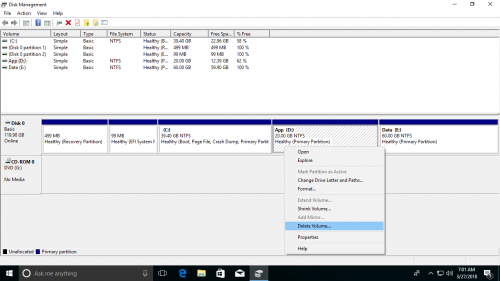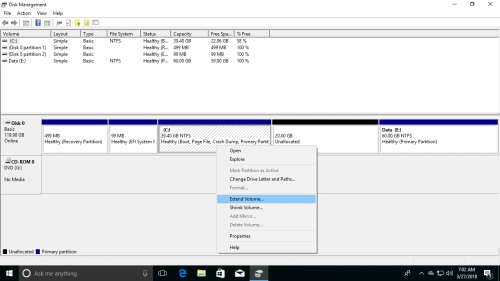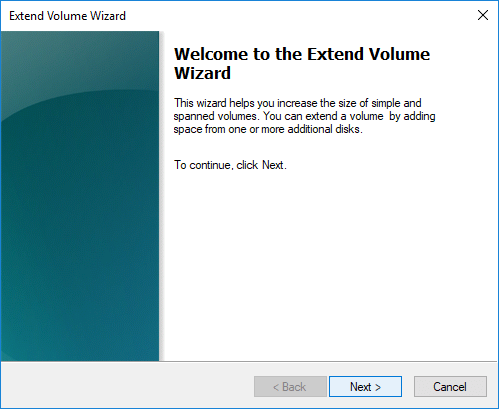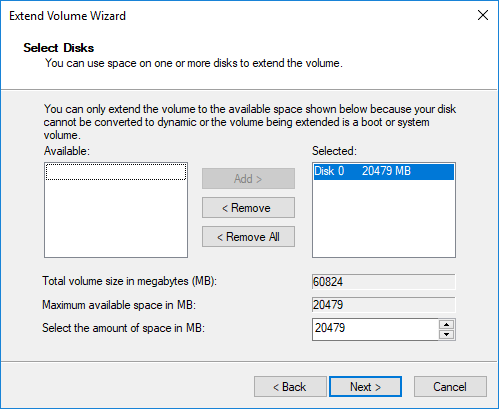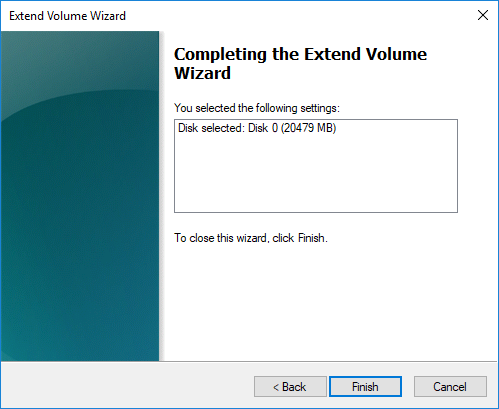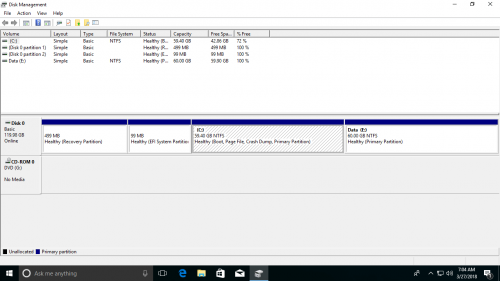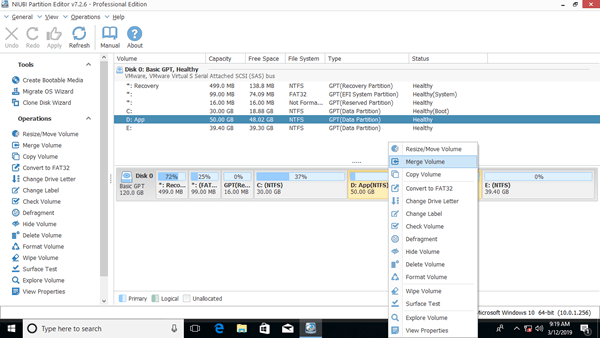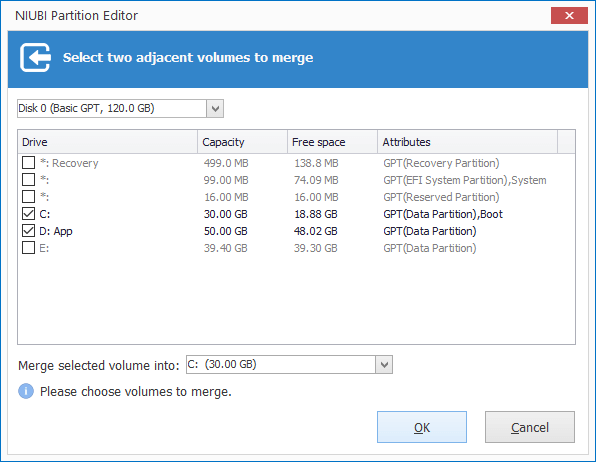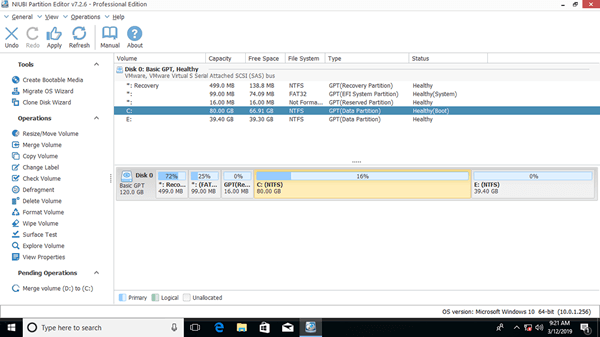Hard disk drive is an indispensable component for both Windows server and personal computer. To use the disk space more efficiently, you can do many operations such as create, delete, format, resize, copy or convert partitions. Many people ask whether it's possible to merge C and D drive in Windows 11/10 computer without losing programs and data, because C drive is running out of space. The answer is yes, after merging D to C drive, there will be more free space in C drive again. This article introduces how to merge C and D drive with Windows native tool and free disk partition software.
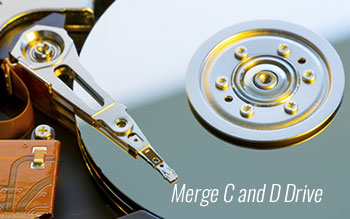
How to merge C and D drive with Disk Management
In Disk Management console of Windows 11/10/8/7 and Server 2022/2019/2016/2012/2008, you can merge two adjacent partitions under certain condition. But for Windows XP or Server 2003, there is no such ability in Disk Management, so you have to use third party software.
Steps to combine C and Drive in Windows 11/10/8/7 and Server 2008 to 2022:
- Back up or transfer all files in drive D to other place.
- Press Windows and R together on your keyboard, type diskmgmt.msc and press Enter to open Disk Management.
- Right click D: drive and select Delete Volume, then its disk space will be changed to unallocated.
![Delete Volume]()
- Right click C: drive and select Extend Volume.
![Extend Volume]()
- Click Next in the pop-up Extend Volume Wizard window.
![Extend Volume Wizard]()
- The available disk space has been selected by default, simply click Next to continue.
![Next]()
- Confirm this operation and click Finish to proceed.
![Finish]()
In a while, drive D is merged into C.
When merge C and D drive with Disk Management tool:
- D drive must be the adjacent partition on the right. Furthermore, it must be primary partition.
- It cannot merge left partition into the right one or merge nonadjacent partitions.
How to combine C and D drive with free partition editor
It is much easier to merge partitions with NIUBI Partition Editor. To Windows 11/10/8/7/Vista/XP home computer users, it has free edition. Better than other software, NIUBI Partition Editor Free edition is 100% clean without any bundles. It has advanced 1-Second Rollback, Virtual Mode and Cancel-at-will technologies to protect system and data. After merging partitions this free partition manager, all files in D will be moved to a folder in root directory of C drive automatically.
Steps to merge C and D drive in Windows 11/10/8/7 with free tool:
- Download and install NIUBI Partition Editor, right click either C or D drive and select Merge Volume.
![Merge volume]()
- In the pop-up window, select both drive C and D, and then click OK.
![Combine C and D]()
- Press Apply button on top left to execute. (Otherwise, this operation only works in virtual mode).
![C and D combined]()
To merge C and D drive in Windows Server 2022/2019/2016/2012/2008, there's no difference except you need the server edition.
Resize partitions instead of merging them together
By merging D to C drive, there will be more free space in C drive again indeed, but there's an issue that D drive will be removed. If you installed programs to D drive, all these programs will stop working although all files are moved to new location.
It is suggested to resize partitions instead of merging them together. If you want to extend C drive, you can shrink D drive to get unallocated space, and then add unallocated space to C drive. In this way, Operating System, programs and anything else keep the same with before. Follow the steps in the video:
Besides merging, shrinking and extending partitions, NIUBI Partition Editor helps do many other disk partition management operations such as copy, convert, hide, wipe, defrag, scan bad sectors.

